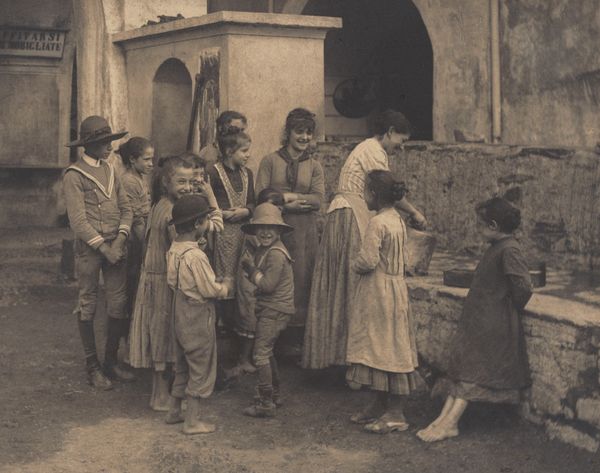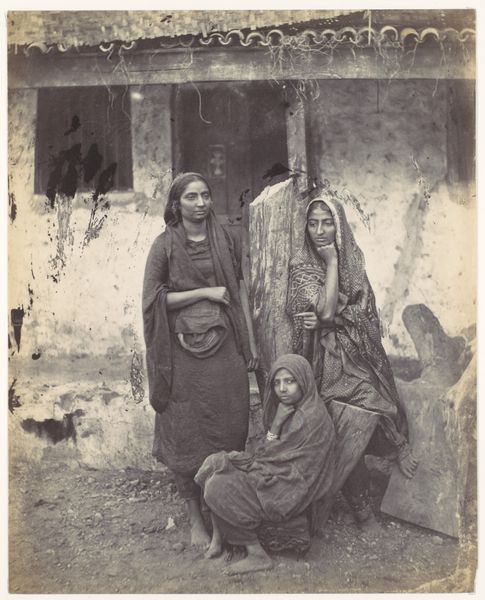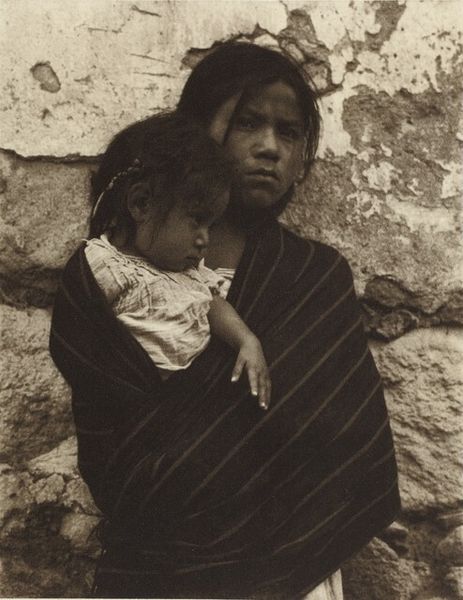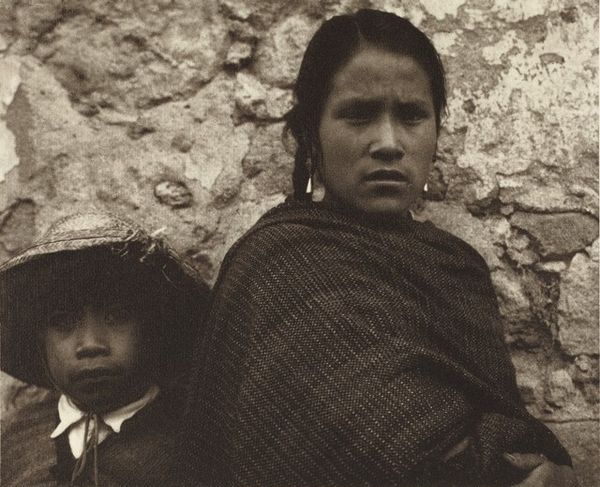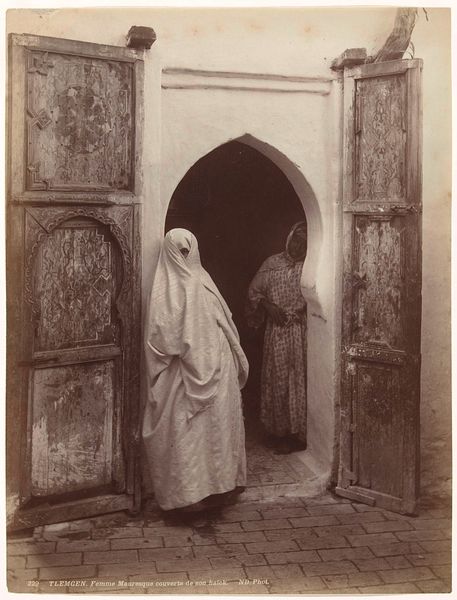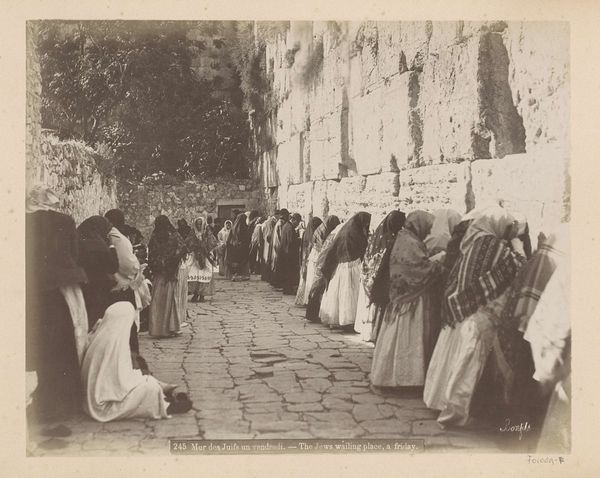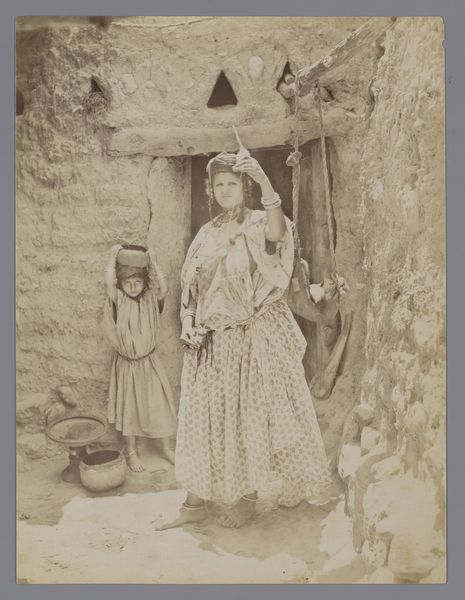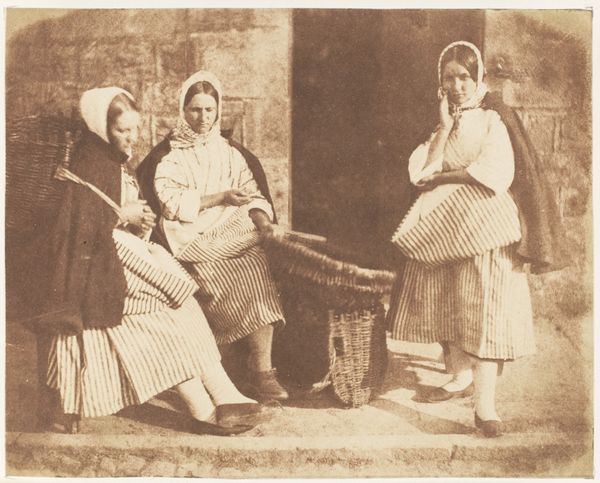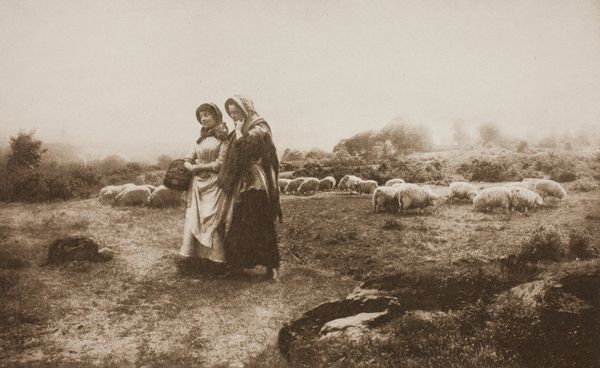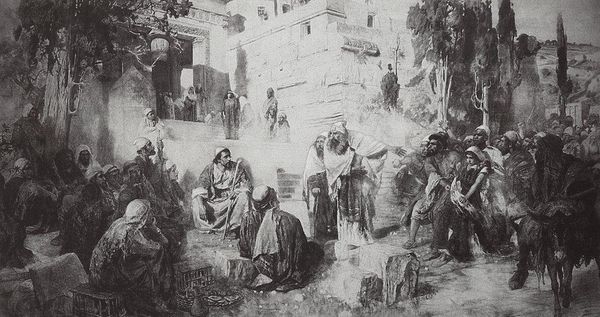
print, photography, gelatin-silver-print
#
portrait
# print
#
photography
#
historical photography
#
gelatin-silver-print
Dimensions: image: 12.7 x 15.8 cm (5 x 6 1/4 in.) sheet: 40.3 x 31.4 cm (15 7/8 x 12 3/8 in.)
Copyright: National Gallery of Art: CC0 1.0
Curator: This is Paul Strand’s "Women of Santa Anna, Michoacan," likely photographed sometime between 1933 and 1967. Editor: It has a haunting, yet very structured presence. The play of light and shadow is immediately arresting. It’s predominantly a study in texture and form, isn't it? The rough wall versus the smooth shawls... Curator: Exactly. The photograph goes beyond the surface level, engaging in questions of representation, specifically looking at indigeneity. We must consider the colonial power dynamics inherent in ethnographic photography from this era. How does Strand, an outsider, frame these women, and what does it say about their place in Mexican society at the time? Their stance has a certain strength and pride, wouldn’t you say? It resists complete objectification. Editor: I concur, there's certainly dignity present. I’m drawn to how the artist employs repetition— the striped rebozos worn by each figure, creating a rhythmic visual pattern throughout the composition. It leads my eyes and makes me curious about the geometry involved. The vertical lines of their clothing create an echoing pattern within the space of the doorway and adjacent wall. Curator: And how does this repetition influence our understanding of their collective identity? Are they presented as individual subjects or archetypes of Mexican womanhood? And to what degree do elements of modernism and realism combine here? Does the composition convey social realism? How are we, the audience, implicated by the gaze that returns from their solemn regard? Editor: Certainly, those somber gazes, some direct, some averted, add emotional weight and psychological complexity to the overall impact. As you stated previously, this resists simplistic readings and keeps us thoughtfully and structurally in relation. Curator: Thinking about the role of the photograph as a political document during periods of intense social transformation can enrich and bring to light broader connections with feminism, race, and indigeneity of Mexico during these historical times. Editor: Indeed. Reflecting on the composition, texture and subject, the photograph reveals the potent beauty in realism. Curator: A valuable and poignant example, where, although problematic, representation allows dialogue between different ways of seeing the same image.
Comments
No comments
Be the first to comment and join the conversation on the ultimate creative platform.
